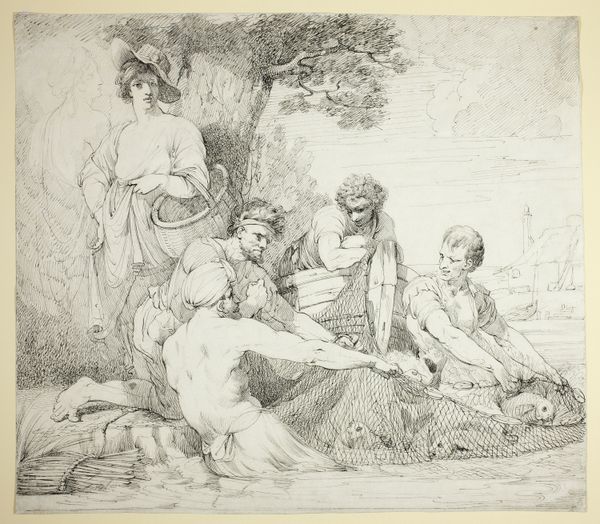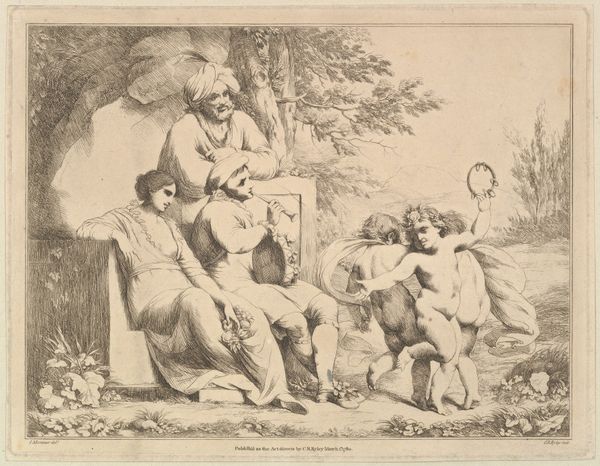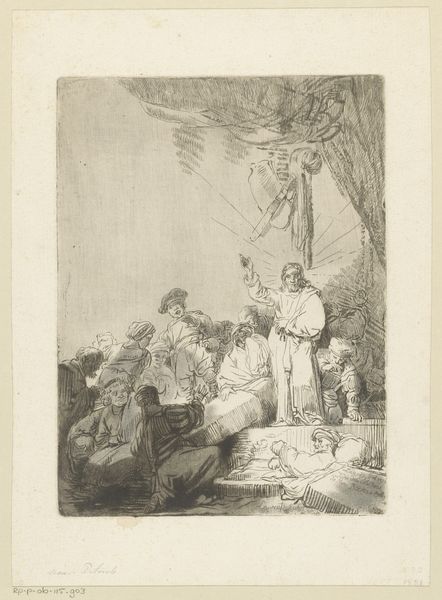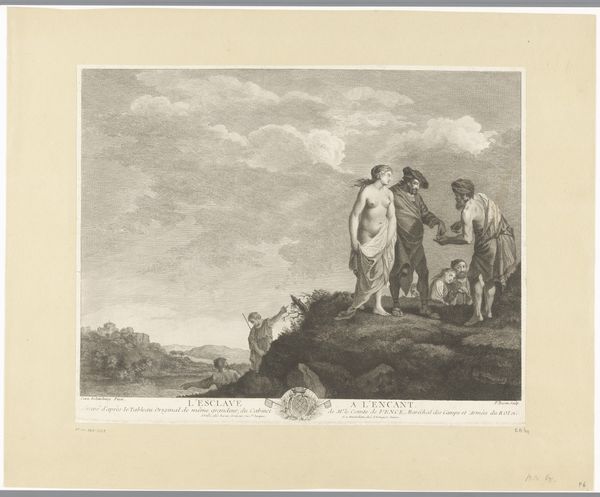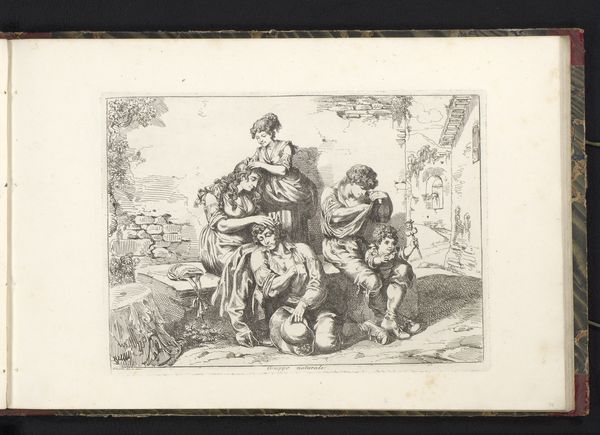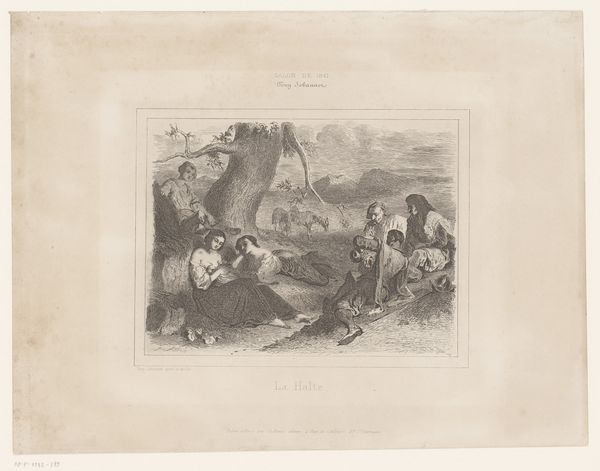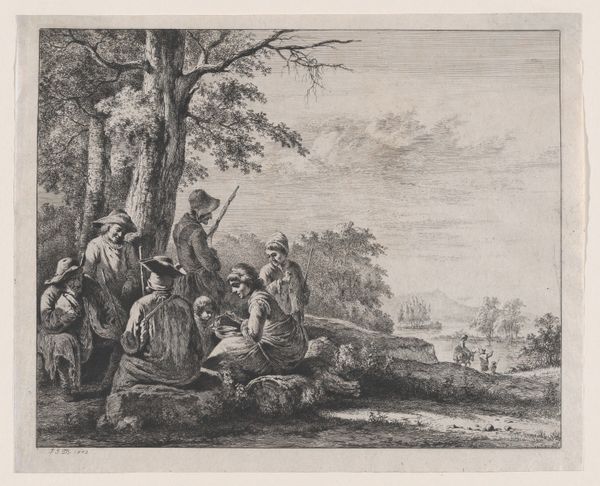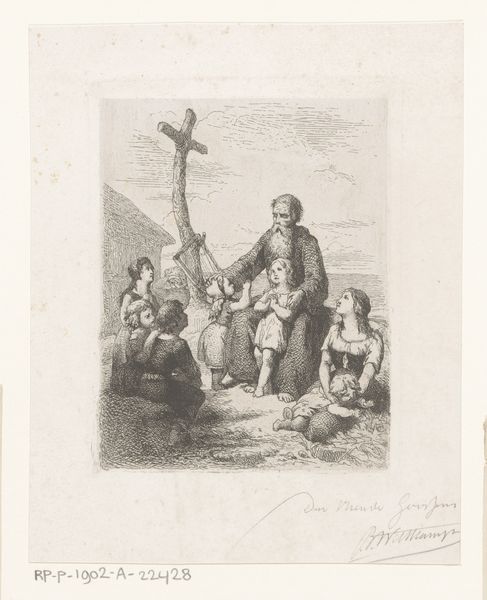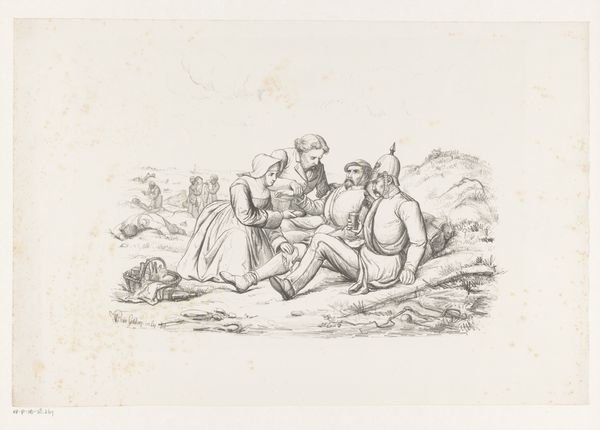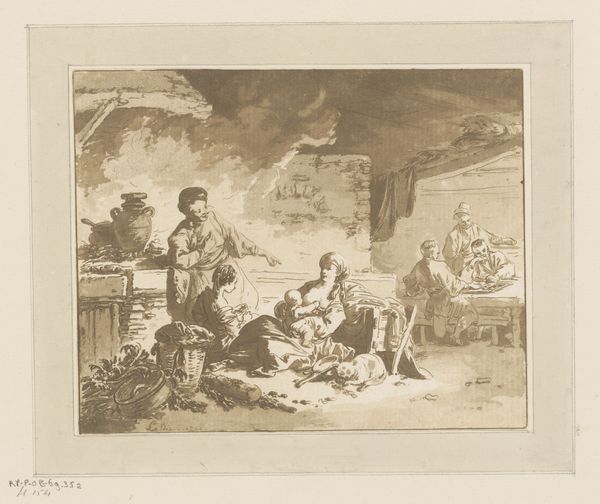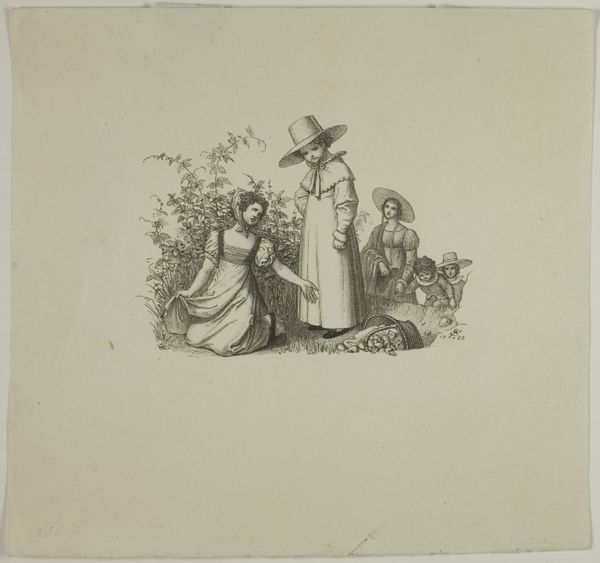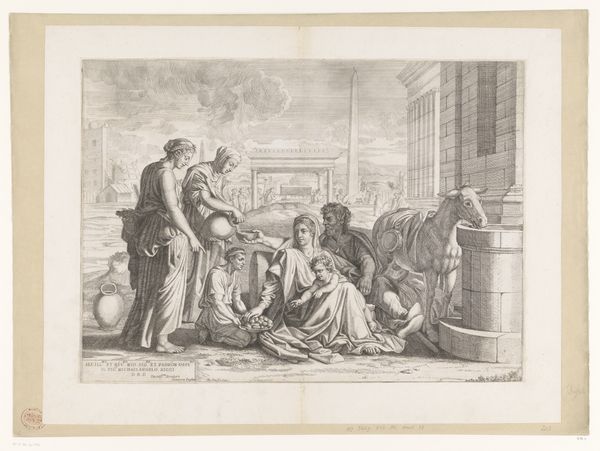
Dimensions: height 101 mm, width 62 mm
Copyright: Rijks Museum: Open Domain
Curator: I’m struck by the soft, almost dreamlike quality of this gelatin silver print. Editor: Indeed. This is a photomechanical reproduction titled "Die Ente," made sometime between 1870 and 1900. It resides here at the Rijksmuseum. I read this piece through the lens of labor, specifically the idealized image of agrarian life that it projects. Curator: I see how the artist uses the iconography of labor to suggest timeless harmony. Notice how the sheaves of wheat become almost halo-like, imbuing the workers with an almost saintly glow. It’s powerful—almost staged, don't you think? Editor: "Staged" is a generous word. I'd argue that these types of images reinforce romanticized notions of labor that elide the realities of exploitation and social stratification inherent in agrarian economies. They sanitize history, right? Look how everyone has relatively nice clothes. Curator: True, the composition is rather clean. But aren't there universal archetypes at play? Look at the circular forms made by the workers bound to one another, a compositional representation of social cooperation. It recalls similar visual motifs found across different cultures over time! Editor: Perhaps. But to read it purely through a Jungian lens obscures the specific socio-economic forces that shaped both the creation of the image and its reception. This isn't a timeless universal. It's rooted in 19th-century anxieties surrounding industrialization and urbanization. Curator: I appreciate your critical read. It's tempting to focus only on what feels beautiful, overlooking the power structures it reinforces. Editor: Exactly! It’s vital to interrogate whose stories are told and how—and equally important, whose stories are conspicuously absent. Curator: It makes me reflect on how symbols gain meaning across generations, adapting as they reflect societal conditions and cultural narratives, and as a symbol now, what statement could we extract from this photo reproduction? Editor: I think we see the potential danger of the idealized nostalgia in the image, how it occludes a complex, historical narrative— and, importantly, whose values are elevated by it.
Comments
No comments
Be the first to comment and join the conversation on the ultimate creative platform.
